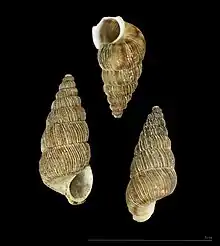Jean-Baptiste Noulet | |
|---|---|
 | |
| Born | 1 May 1802 Venerque, Haute-Garonne, France |
| Died | 25 May 1890 (aged 88) |
| Education | University of Montpellier |
| Known for | La Flore du Bassin sous-pyrénéen (1837) |
| Scientific career | |
| Fields | Archaeology, malacoloy, botany, philology |
| Institutions | Natural History Museum of Toulouse |
| Thesis | (1832) |
| Author abbrev. (botany) | Noulet |
Jean-Baptiste Noulet (1 May 1802 – 24 May 1890) was a French scientist and naturalist who helped to prove the archæological existence of humans and was one of the pioneers of the scientific discipline of prehistoric archaeology. He was born in Venerque.
Having obtained his doctorate in medicine at Montpellier in 1832, Noulet focused his research on Occitania and latterly on the Occitan language. In 1841, he was appointed chair of medical natural history at the preparatory school of medicine and pharmacy in Toulouse. Noulet served as the director of the Natural History Museum in Toulouse from 1872, where he founded a gallery devoted to prehistory.
In the field of malacology, he issued an analytical study on the natural history of fluvial and terrestrial mollusks native to the sub-Pyrenean basin (1834). As a botanist, he published an exhaustive volume (754 pages) on regional plants of the sub-Pyrenees, La Flore du Bassin sous-pyrénéen (1837).
.jpg.webp)
In 1851, at Clermont-le-Fort, he discovered the remains of Pleistocene fauna, along with the presence of lithic artifacts, findings that seemingly proved the co-existence of Pleistocene animals with humans, and in essence, confirmed ideas that were earlier proposed by prehistorian Jacques Boucher de Perthes (1788-1868).[1]
 Cochlostoma nouleti
Cochlostoma nouleti Paratype of Cadurcotherium nouleti
Paratype of Cadurcotherium nouleti
References
- ↑ ASNAT Jean-Baptiste Noulet, geologist, botanist, prehistorian (Venerque 1802-1890)
- ↑ International Plant Names Index. Noulet.
External links